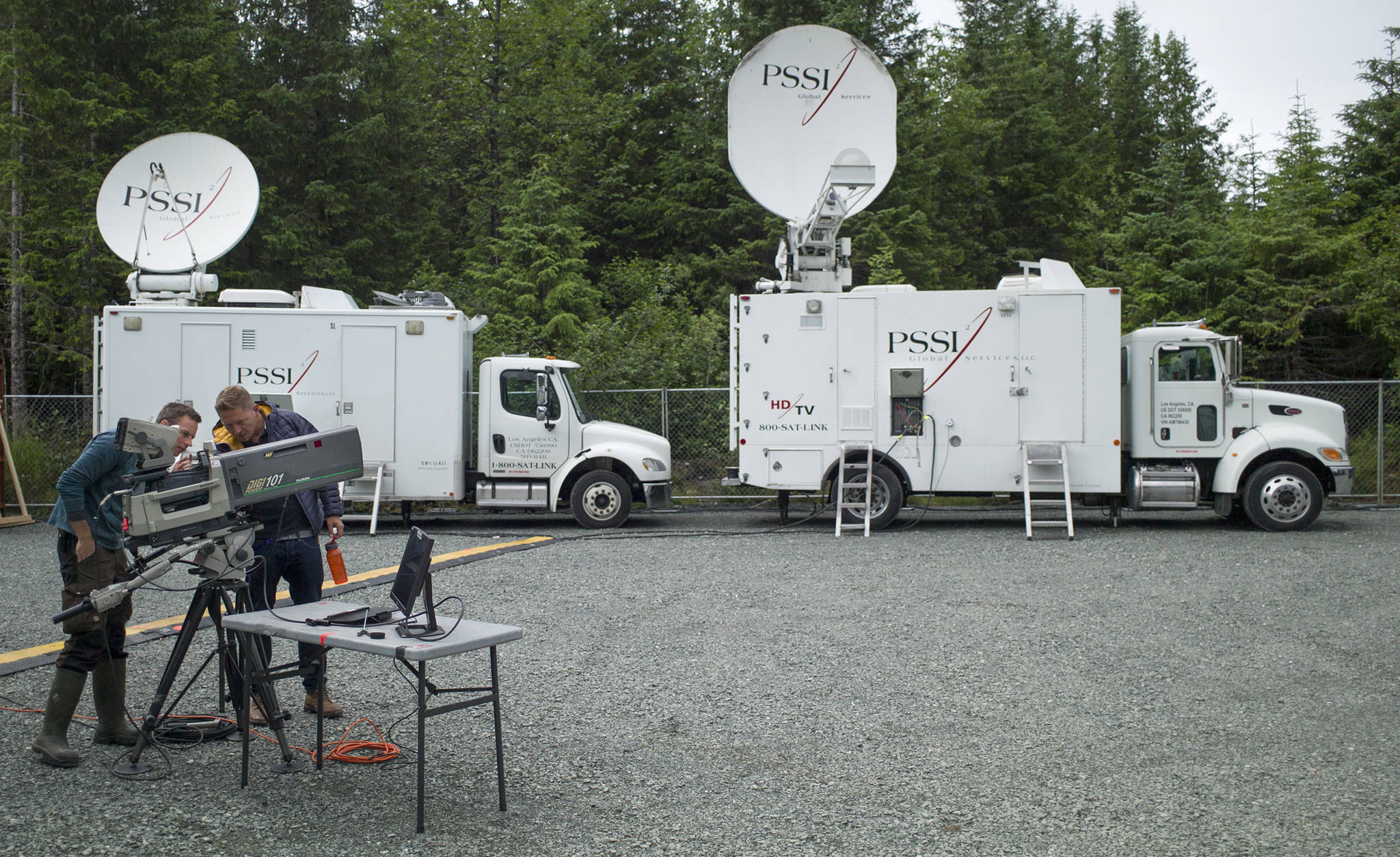About a year ago, British Broadcasting Corporation (BBC) Series Producer Adam White walked into the Mendenhall Glacier Visitor Center, scouting out locations for an ambitious live nature broadcast in Alaska.
As Mendenhall Glacier Visitor Center Director John Neary recalls, White was merely checking to see if the glacier was a promising place to shoot footage. When Neary took White down nearer to the glacier, White took a look around and knew the glacier could be more than just one location. It could be the location for the show.
“He was pretty stunned,” Neary remembered, “and thought that this could maybe be the hub for the statewide broadcast.”
With that, Juneau’s iconic glacier became the centerpiece of Wild Alaska Live, a three-night event that will be broadcast to millions of viewers in the United States and the United Kingdom. The show will air July 23, 26 and 30, filming live both in the morning for the UK and in the late afternoon for the U.S.
The show follows the success of the joint BBC and PBS Big Blue Live production in 2015, a live nature show from Monterey Bay in California. Following that show, which was viewed by a massive family audience in both countries (White said more than 10 million people watched it in the UK), the two broadcasting companies wanted to do another production.
Bill Margol, the Senior Director of Programming Development for PBS, said the show organizers got together to scour the globe for a location that had both a stunning natural spectacle and a compelling story to tell.
“That quickly narrows the options,” Margol said. “The thing we found is that here in Alaska there’s this incredible story to be told of this event that happens during the salmon run and this sort of engine that drives all of these animals — and not only animals, but it’s so impactful on Alaskans — and it comes down to capturing this moment.”
Telling the story of the salmon run in a way tells the story of Alaska, Margol and White agreed, and gave the production crew the chance to film all kind of wildlife and locations. Cameras are installed all over the Tongass National Forest, including the Mendenhall Glacier, as well as Katmai National Park and Kenai Fjords National Park. Chris and Martin Kratt will host the PBS coverage, while Matt Baker will anchor BBC’s coverage.
Visits to the glacier will remain largely unchanged, both Margol and Neary said, as the large BBC and PBS setup is in the back corner of the tour bus parking lot and the stage for the live broadcast itself is fairly small.
White and Neary both advised visitors to stay away from the production areas, and Neary said rangers will be posted around the Visitor Center to make sure visitors are respectful of the filming crews. The best way for Juneau residents to get involved with the show, White said, is to tweet pictures with the hashtag #AlaskaLive to be featured either on the program or on the program’s Twitter feed.
White compared the production to primetime Olympics coverage, in that the main portion is live, but there are some highlights thrown in. For example, there’s no way to guarantee that the cameras capture a bear snagging salmon from a river during the exact time that the show is on. Cameras are already located throughout the region and are filming in order to record moments such as that to be shown on the live broadcast.
Timing isn’t the only challenge for the crew. The production bus wouldn’t fit on an Alaska Marine Highway ferry, so it had to take a barge up to Juneau. At Katmai National Park, to avoid “interfering with the wilderness,” as White said, the crew isn’t using a generator. Engineering Manager Gareth Wildman figured out a way to use hydrogen fuel cells to power the setup at Katmai. White said no outside broadcast has ever done that before.
All of those factors add up to make this project “risky TV,” White said. More than 100 crew members are involved in the show’s production, White said, making this a bigger production than Big Blue Live. A couple dozen of them were bouncing from tent to tent and truck to truck Thursday afternoon, editing footage and testing out equipment for the shoot.
The remoteness that makes the filming so difficult, Margol said, is also what makes Alaska so attractive for the two broadcasting companies. White said Alaska was their top choice for this endeavor, and that just the fact that Alaska is as untouched as it is is a great story in itself.
“You still have these huge intact ecosystems,” White excitedly said. “That’s phenomenal. That’s something that Alaskans and Americans, I can say as a Brit, should be extraordinarily proud of what you have here in Alaska. I think that’s an inspirational story, and it’s a story that should be brought to the whole of America and the whole of the UK.”
Wild Alaska Live Broadcast Schedule (Alaska Time)
Sunday, July 23
10-11 a.m. (aired live in U.K.)
4-5 p.m. (aired live in U.S.)
Wednesday, July 26
11-noon
4-5 p.m.
Sunday, July 30
10-11 a.m.
4-5 p.m.
• Contact reporter Alex McCarthy at alex.mccarthy@juneauempire.com.

